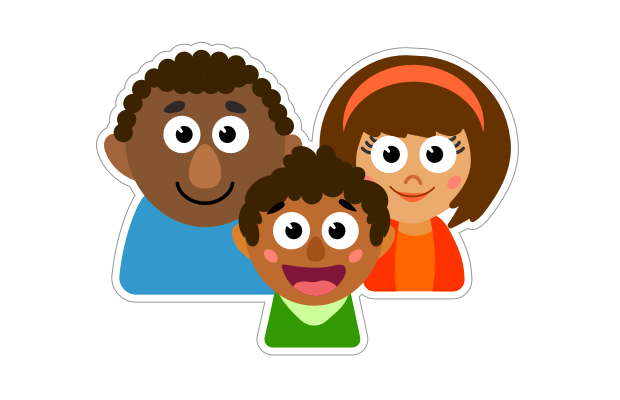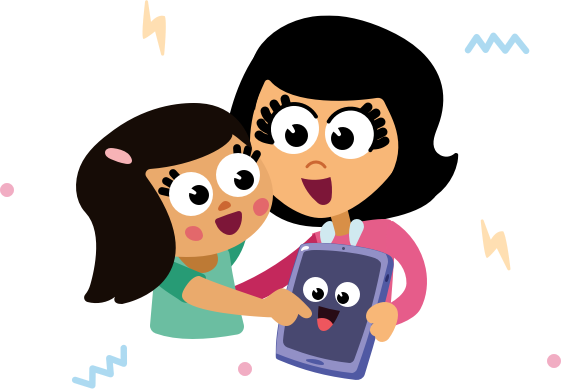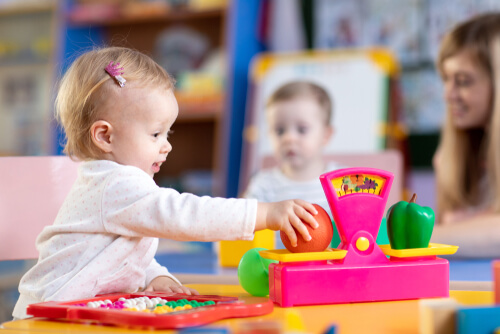Wonderful Words - Word Learning for Children
Jan 23, 2022 When children start unlocking new words, you suddenly get to meet a whole new side of your little one that you didn’t know. Whether they use them correctly or not (my one-year-old spontaneously says “turtle” at random moments throughout the day) early vocabulary allows us to see what’s going on in their little brains.
First words are often a mixture of family names, and a few random ones like “doggy,” “baby,” “banana,” and the highly favored “no!” But after those first few, where do you go next?
Word learning comes down to hearing them . . . seeing them . . . understanding them . . . and hearing them again! Let me break those down for you.
Learning New Words with Speech Blubs
Speech Blubs is a great way to teach new words to your child. Start a free trial today and explore engaging activities that your child will love and benefit from.
Boost Your Child’s Speech Development!
Improve language & communication skills with fun learning!

4 Steps of Teaching New Words to Your Child
Learning strategies for learning vocabulary and language development are based on how children learn. Try these:
1. Hearing New Words
If they don’t hear it, they won’t say it. Simple as that. We have to get involved and get talking so our children hear as many words as possible.
We, of course, don’t want to talk at them all day, but we should have a friendly running conversation throughout the day where we label things we see, hold family conversations, and chat away while doing daily tasks. This allows them to gently and naturally hear words and sentences.

2. Seeing New Words
When we store words in our head, we often store a visual in place of the word with it to help us remember it. Having a visual for the word is a strong and effective way of learning and remembering words. So, not only naming, for example animals, but also showing the animal, will help your child absorb the word into their vocabulary.
If they continue hearing the word ‘ball’ when they see the object (ball), then it strengthens the relationship between the object and the word. This in time should help their seeing the object and then naming it themselves.

3. Understanding New Words
Words are best learned and remembered within the context around them. When a child learns the word ‘elephant,’ they not only learn that word, but they learn and store it using lots of other information – what it looks like, sounds like, feels like, where it lives, what category it is, etc. When we teach vocabulary, we must try to include some of these elements to boost their understanding, and improve their learning, retention, and retrieval.

4. Hearing New Words Again
They may know the word and have maybe even used it, but keep using and modeling the words they hear so they have examples of the words being used in different contexts and sentences.
Now we know how . . . let’s think about what!
Start with these 100 Words
Here are 100 words that I think can be a great start. They are a mixture of fun, functional, objects, actions, and concepts (they aren’t in any particular order).
Greetings
- Hello
- Bye
- Thank you
Food
- Banana
- Cake
- Apple
- Pear
- Biscuit
- Juice/milk
Animals
- Cow
- Dog
- Cat
- Sheep
- Horse
- Bear
Family
- Mommy
- Daddy
- Grandma
- Grandpa
- Baby
Colors
- Blue
- Red
- Green
- Yellow
- Pink
Verbs
- Standing
- Sitting
- Clapping
- Dancing
- Drinking
- Read
- Hide
- Fly
- Drive
- Run
- Walk
- Sleep
- Eat
- Jump
- Wait
- Finished
Vehicles
- Car
- Bike
- Bus
- Train
- Plane
Body Parts
- Hand
- Feet
- Eye
- Nose
- Mouth
Opposites
- Yes/No
- Up/Down
- Open/Close
- Big/Small
- Fast/Slow
- Happy/Sad
- Stop/Go
Home
- Door
- Window
- Bed
- Bath
- Table
- Chair
- Key
Kitchen
- Spoon
- Bowl
- Water
- Cup
- Cooker
- Mix
Nature
- Sun
- Rain
- Tree
- Flower
- Leaf
Types of Buildings
- House
- Shop
- Farm
- School
Other Words
- Hat
- Shoe
- Ball
- Bubble
- Book
- More
- Again
- Where?
- Who?
- Phone
Activities for Engaging Your Child in Word Learning
The easy answer is in play and in the day-to-day. Try out a few of these activities and sneak in some new simple vocabulary. You can use the above list for ideas, but make sure the words are useful and appropriate for your child – for example, you might have a pet’s name they are motivated to learn.

- Build a farm and name the animals and what they are doing
- Set up a shop and name the food
- Race cars and talk about fast/slow, the color of cars, and type of vehicle
- Build towers and name the colors, name the heights (big/small), and related actions (build/fall/knock)
- Play dress up and name the clothes, colors, and where they are going
- Look at family photos and name who is in the them and what they are doing
- Go shopping together and name the foods you see
- Make/set up a house for their toys naming the furniture and what they are doing in their house
- Play ‘Simon says’ and name the actions, e.g. jumping, clapping, or sleeping
- Sort out their animals into colors, where they live, and if they are fast or slow
- Throw balls/beanbags and describe its action, e.g. high, low, fast, slow, up, or down
Here are even more . . .
- Sing “head, shoulders, knees, and toes” to label the body parts
- Hide items in the house and look for them together, naming what you are looking for and where it might be hidden
- Play “what’s in the bag” with an object for each of you to describe and name
- Make a simple written/picture menu for snacktime so they can look at options and name their choice
- Give them a little bit of a favorite food and model asking for “more” before they receive more
- Put favorite toys in a hard to open box and model requesting “open” before they can access it
- Look at books and name pictures that you see
- Set up a teddy bear picnic where you can name the toys, the food, and the actions
- Draw round body parts like hands and feet, and name-related vocabulary – for example, fingers, toes, hand, wrist, and palm
- Introduce new objects at bath time, for example, cups, spoons, plates for them to name and play within a new setting.
- Print out pictures of familiar people’s faces, cut into big simple shapes to make a puzzle of their faces which your child can complete, and name the person and facial features.
